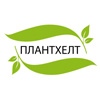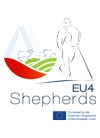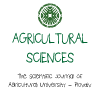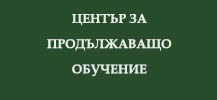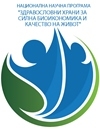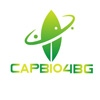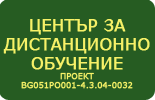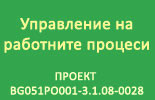Production economics
|
Course title: |
Production economics |
|
|
Course code: |
IFPRE |
|
|
ECTS: |
5 |
|
|
In-class hours |
Lectures: |
30 |
|
Laboratory work/Tutorials: |
30 |
|
|
Self-preparation hours |
Practical training: |
- |
|
Other: |
65 |
|
|
Total hours: |
125 |
|
|
Language: |
English |
|
|
Study cycle: |
BSc, Master |
|
|
Semester: |
Winter, summer |
|
|
Faculty: |
Faculty of Economics |
|
|
Name of the lecturer(s): |
Prof. Ivan Penov, PhD |
|
|
Mode of delivery: |
Face-to-face, distance learning |
|
|
Prerequisites: |
Microeconomics or Agricultural Economics |
|
|
Learning outcomes of the course unit: |
Production economics is concerned with producers behavior related to their choices. The course examines the goals and objectives of producers; the choice of output and input level, allocation of resources among the outputs, est. The main models discussed in the course are: the factor-product model; factor-factor model. The main optimizations procedures considered in the course are: output maximization; profit maximization; constrained optimization. The course also includes the production functions and cost curves estimation. The knowledge and skills gained in this course provide a good basic background preparation for advanced micro and macroeconomics, mathematical modeling and econometrics. Practical skills gained by the students after the training are in two main directions. First, the students will acquire skills to analyze the production process and to evaluate the technologies. Second, (1) the students will have skills to identify problems at a concrete level, (2) to raise them at the abstract level and to select possible solutions offered by the theory, (3) to adapt the abstract solutions to the specific conditions. |
|
|
Course contents: |
LECTURES 1. Introduction. The logic of the economic theory. Abstraction in economic theory. Economic theory and economic models. Presentation of economic relations. What is a production function? 2. Production with one variable factor. Total physical product. Marginal product. Average product. Stage in the production process. Neo-classical production function. Input production elasticity. The law of diminishing returns. Output maximization. Necessary and sufficient conditions. 3. Profit maximization with one input and one output. Total value of the product. Value of the marginal physical product. Resource cost. Equating the value of marginal physical product and input price. General conditions for profit maximization. Necessary and sufficient conditions. Demand for inputs function for the firm. 4. Profit maximization on output site. Cost and returns. Variable, fixed, and total cost. Duality of cost and production. Average variable cost, average fixed cost, average total cost. Marginal cost. Equating marginal cost and product price. General conditions for profit maximization. Necessary and sufficient conditions. Supply function for a firm. 5. Production with two inputs. The three dimensional production functions. Isoquant and the marginal rate of substitution. The isoquant map. Stages in production process. Partial and total derivatives. General conditions for output maximization. Necessary and sufficient conditions. 6. Profit maximization with two inputs. Isocost line. The slope of the isocost line. Equating the value of marginal physical products and input prices. General conditions for production maximization. Necessary and sufficient conditions. Deriving the input demand functions. 7. Maximization subject to budget constraints. The budget constraints, isocost line and isoquant map. Expansion path. Global and constrained optimization. Constrained output maximization. Constrained revenue maximization. Cost minimization is subject to a revenue constraint. 8. Production functions used to model production processes. The Coob-Douglas production function. The Spillman production function. The transcendental production function. 9. How to use the knowledge from this course? A theoretical framework to study producer behavior: Example: cash rent, shared rental arrangement, analysis of state programs. Tool for optimization of the production process: Example: Optimizing the fertilizers use in agriculture. Comparing production technologies. Optimization of the factors in foot processing industry.
TUTORIALS 1. Production with one variable factor and output maximization. 2. Profit maximization with one input and one output. Demand for inputs function for the firm. 3. Profit maximization on output site. Duality of cost and production. Supply function for a firm. 4. Production with two inputs and output maximization. The three dimensional production functions. Stages in production process. Partial and total derivatives. 5. Profit maximization with two inputs. Deriving the input demand functions. 6. Maximization subject to budget constraints. Global and constrained optimization. Constrained output maximization. Constrained revenue maximization. Cost minimization subject to a revenue constraint. 7. Estimation of production function. Regression analyses. Tests for coefficients and model significance. Problems related to estimation procedures. Production functions in agriculture. Production functions in industry. 8. How to use the knowledge from this course? Theoretical framework to study producer behavior: Example: cash rent, shared rental arrangement, analysis of state programs. Tool for optimization of the production process: Example: Optimizing the fertilizers use in agriculture. Optimization of the factors in foot processing industry. |
|
|
Recommended or required reading: |
Deberlin, D. "Agricultural Production Economics", Macmillan, 1986. |
|
|
Planned learning activities and teaching methods: |
The main part of the material in Productionc Economics is taught though lectures. During the tutorials the students solve cases related to the lectures’ material, optimize different production processes, analyze the effect of price changes, estimate a simple production and cost functions. |
|
|
Assessment methods and criteria: |
Participation in class discussions-10% Projects- 10% Midterms -30% |
|
 - Events on the occasion of the 80th anniversary of AU
- Events on the occasion of the 80th anniversary of AU
